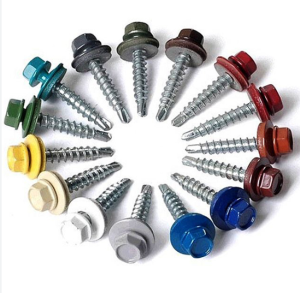Understanding Self-Drilling Screw Sizes and Their Importance in Construction Applications
Understanding Self-Drilling Screw Dimensions
Self-drilling screws have revolutionized the fastening industry by providing a fast and efficient method for securing materials without the need for pre-drilling. Their unique design includes a drill bit-like point that enables them to create their own holes as they are driven into the material. This feature not only saves time but also enhances the structural integrity of the connection. However, to effectively use self-drilling screws in various applications, understanding their dimensions is crucial.
Types of Self-Drilling Screws
Self-drilling screws come in various types, each designed for specific applications. Common types include
1. Self-Drilling Sheet Metal Screws Designed primarily for fastening metal sheets, these screws typically have a coarse thread and a sharp drill point. 2. Self-Drilling Wood Screws Ideal for wood applications, these screws often have finer threads and a different head design to provide a better grip in wooden materials.
3. Self-Drilling Lag Screws These screws have large heads and are used in applications where heavy-duty fastening is needed, especially in structural applications.
Understanding the specific type of self-drilling screw needed for an application will dictate the appropriate dimensions.
Key Dimensions of Self-Drilling Screws
1. Length The length of self-drilling screws varies from 1/2 inch to several inches, depending on the material thickness they are intended to penetrate. Selecting the correct length is vital to ensure the screw does not protrude excessively or fail to penetrate sufficiently.
self drilling screw dimensions

2. Diameter The diameter refers to the thickness of the screw. Common diameters for self-drilling screws range from 6 to 14 (approximately 0.138 to 0.194 inches). The diameter should be chosen based on the load-bearing requirements and the material being fastened.
3. Thread Pitch The thread pitch is the distance between the threads and is crucial for determining the screw’s grip. Coarse threads provide better holding power in softer materials, while fine threads are preferred for harder materials.
4. Head Style Self-drilling screws come with various head styles, including flat, hex, round, and pan heads. The head style affects how the screw will be driven and the type of driver needed. It also impacts the aesthetic appearance of the finished product.
5. Point Type The point of the screw is critical as it determines how effectively the screw will drill into the material. Common point types include - Type 1 (self-drilling) Feature a drill point for easy penetration. - Type 2 (self-tapping) Designed to tap into existing holes. - Type 3 Offers a more aggressive point for tough materials.
Material Considerations
The materials used to make self-drilling screws vary widely, impacting their dimensions and overall performance. Typically, screws are made from carbon steel, stainless steel, or specialized alloys. The material chosen will affect the corrosion resistance, strength, and durability of the screw, especially in hostile environments.
Applications of Dimension Knowledge
Understanding self-drilling screw dimensions ensures that users can select the appropriate screw for their specific project. Whether it's fastening metal sheeting in construction, securing wood in cabinetry, or joining structural components, choosing the right dimensions will lead to stronger and more reliable connections.
In conclusion, self-drilling screws are an essential tool in many industries. By understanding the critical dimensions such as length, diameter, thread pitch, head style, and material considerations, users can make informed decisions that enhance the quality and durability of their work. Proper selection of self-drilling screws can result in significant time savings and improve overall project efficiency. With this knowledge, professionals and DIY enthusiasts alike can confidently tackle fastening tasks with precision and reliability.
-
Top Choices for Plasterboard FixingNewsDec.26,2024
-
The Versatility of Specialty WashersNewsDec.26,2024
-
Secure Your ProjectsNewsDec.26,2024
-
Essential Screws for Chipboard Flooring ProjectsNewsDec.26,2024
-
Choosing the Right Drywall ScrewsNewsDec.26,2024
-
Black Phosphate Screws for Superior PerformanceNewsDec.26,2024
-
The Versatile Choice of Nylon Flat Washers for Your NeedsNewsDec.18,2024










